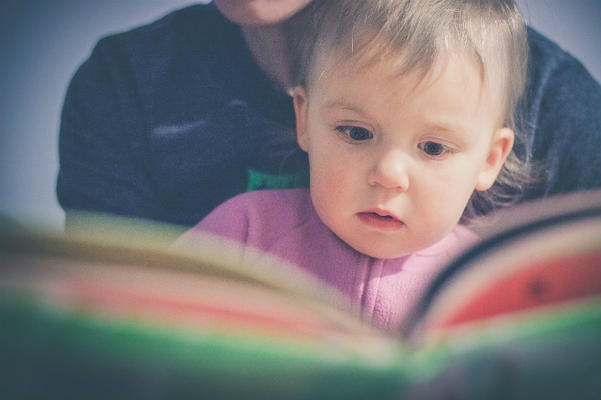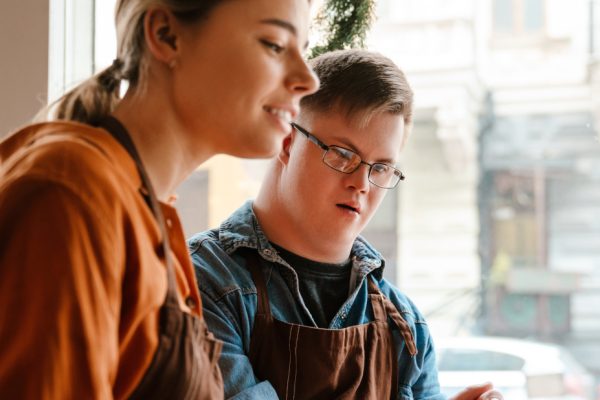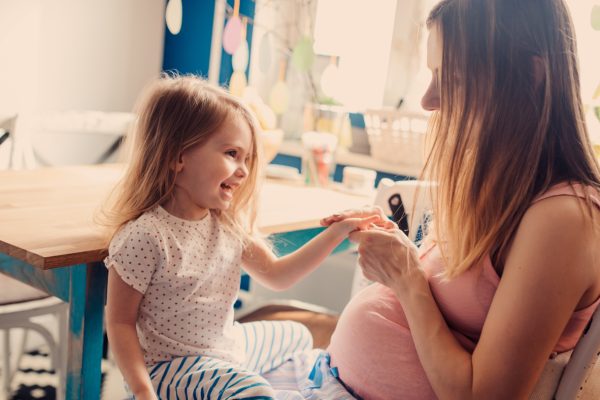
Which books are best? How the type of book affects children’s language learning
As a speech-language pathologist and a mother of two young boys, I’m always on the hunt for books that will capture children’s interest and encourage them to interact and communicate.
I’ve always followed the principle that it’s not what you read, but how you share it with a child that makes the difference. However, I do find that some books seem to be more helpful when it comes to helping children interact and communicate than others.
This raises the question….when it comes to promoting language learning, which books are best?
To answer this question, I searched for studies that have looked at the effect of different types of books on children’s language learning. Here’s what I found…
Do the types of pictures in a book affect what a child learns from a book?
YES. A study in 2006 compared young children’s ability to learn the steps of a new task in three different types of books: one with colour photos, one with coloured drawings and one with black-and-white drawings [1]. The study showed that:
- 18-month-olds learned the most steps of the task from colour photos
- 24-month-olds learned as much from colour photos as from colour drawings, but learned less from black-and-white drawings
- 30-month-olds learned some of the required steps with all three types of pictures
From this study, we can see that the types of pictures in a book can make a big difference to what children can learn from a book. What this study really looked at was the children’s ability to respond to different types of symbols. A symbol is something that represents something else. For example, a red octagon is a symbol that represents “stop”. Pictures are symbols, and they stand for the real items that they depict. A more concrete and simple picture symbol is one that looks close to the real thing, such as a realistic colourful photograph. A more abstract picture symbol would be a black-and-white drawing, as it doesn’t resemble the real item as closely as a photograph.
A child’s ability to use and understand symbols is referred to as “symbolic skills”.
Other examples of symbols in a child’s life are pretend toys, as these toys stand for the items they represent in real life (e.g. a toy teapot represents a real teapot).
Words are also symbols as they stand for the things we are talking about. Some children with language delays have difficulty using and understanding some of the above types of symbols. It is, therefore, important to think about the types of pictures in a child’s book to ensure they are symbols that the child understands.
So when it comes to pictures, which books are best?
For younger children, it’s books with colourful, realistic photographs.
Are moving parts in books helpful?
MAYBE or MAYBE NOT
I’ve watched many parents use books with tabs, flaps, and pop-ups with their children. It often seems like a competition between the moving parts and the conversation. I found two articles in which researchers looked at the effect of “manipulatives” (flaps, tabs, and pop-ups) on children’s learning.
- The first study [2] looked at typically-developing (20 – 36 month old) children’s ability to learn new words and new facts from three types of picture books:
- books with realistic, colour photographs
- books with colour drawings
- books with colour drawings and manipulatives such as flaps and tabs
The children learned the most from books with realistic pictures, and the least from books with manipulatives. The authors concluded that “trying to increase interest in material by adding irrelevant ‘bells and whistles’ [like manipulatives] actually results in less learning” and that “less is more when attempting to convey information to young children” (p. 400).
- The second study compared the language used by four children with language impairment while looking at a regular storybook versus a storybook with manipulatives [3]. They found that the children used longer sentences and asked more questions during the book with manipulatives.
The authors suggested that the storybook with manipulatives encouraged the children to use longer sentences because the children were more engaged and interested in the book. In addition, they thought that giving the child opportunities to get involved in the book reading by unfolding pages and lifting flaps may have given the child a feeling of greater control in the book reading. So when it comes to books with moving parts, are these books the best? The verdict still seems to be out on this one. For typically developing children, they might be distracting. But for children with language impairments, they may encourage language use and greater participation.
Do electronic books promote language and literacy development more than paper books?
NO. I have never used an electronic book during speech therapy or with my own children. I’ve always felt that I’d have to compete with the buttons and the screen for the child’s attention. But is this really true?
I found a study in which researchers compared 4-6 year-old children’s learning from a paper and an electronic version of the same book [4]. They found that children who read the paper book:
- were exposed to all of the pages of the book (the whole story)
- could reproduce more text (words) from the story
- knew the content of the story better
- could read some words from the story, both with and without the pictures that depicted the words
Children who read the e-book only looked at only 35% of the book’s pages and didn’t look at them in the correct order. When the researchers restricted the children’s access to the games in the e-book, the children made some progress reading words both with and without accompanying pictures. But the children who were allowed to access the games could read some of the words only when pictures were present. These children explored half as many pages as the other e-book children and they spent almost half of their time playing games (versus listening to the story). The authors explained that the attractive buttons and games in e-books diverted children’s attention away from the story. They concluded that e-books cannot be considered to provide children with the same reading experience as paper books.
So when it comes to e-books, are these books best?
No. Low-tech gets the thumbs up!
Does the type of book influence how parents read the book with their child?
YES. I’ve noticed that when reading alphabet books, parents sometimes talk mainly about the letters, which comes at the expense of a conversation with the child about the illustrations and anything else of interest to the child. I came across an article [5] in which the authors suspected that alphabet-rhyming books likely encouraged parents to talk about sounds, letters, and rhyme and that storybooks likely encouraged conversation about the story, characters, and vocabulary. They asked the parents of 72 children (with an average age of 5 years) to share both types of books with their child, just as they would at home, and recorded their reading behaviour.
The authors were right about storybooks – these books encouraged conversation about the story and characters. But they found that alphabet-rhyming books encouraged discussion about both sounds, letters and rhyme as well as about the story and vocabulary. They also found that parents of children with language impairment had fewer discussions about sounds, letters, and rhyme than parents of typically-developing children. They explained that this may be because their children may have recognised fewer letters or asked fewer questions about letters.
Alternatively, parents’ goal for their child with language impairment may have been to encourage their child to use longer or more complex sentences versus to encourage pre-reading skills (rhyme, letter and sound knowledge).
A final finding of this study was that many parents didn’t use any strategies when reading with their child. This means that they didn’t encourage conversation about the sounds or letters, or about the story and characters. As a conversational approach to book-reading with children has been linked to increased language and reading development, it’s very important for parents to invite the child to offer opinions and to ask and answer questions while sharing books.
So which type of book is best for sharing with a child?
There really is no correct answer here. But it helps to be aware that certain types of books may encourage conversations about pre-reading skills (e.g. rhyming, letters, sounds) while others may encourage conversations about the story. Both of these types of conversations are important for a child’s development, especially for children with language impairments.
Choosing the Best Book
When sharing books with your child, think about the following:
- The type of pictures in the book – Colourful, realistic photos are probably a good option for a young child (under 24 months) or a child at an early stage of development.
- “Bells and whistles” – Moving parts in a book such as flaps, tabs, and pop-ups may help a child with language impairment participate nonverbally, which may stimulate more language. For other children, however, moving parts and electronic games can detract from conversation and understanding of the story. Children should be carefully observed during the use of books with “bells and whistles” to ensure they are not too distracting.
- How you read the book – It is important to be responsive to your child when reading together. This means following your child’s lead and talking about what interests him or her. Encouraging conversation about the story and connecting it to your child’s life builds language and thinking skills. Talking about the letters, sounds, and rhyme in a book encourages pre-reading skills. Be aware that different types of books may encourage different conversations, and different interest and behaviour in children.
I still believe that it’s not just what you read, but how you share it with a child that makes the difference. However, it’s clear that the type of book really can influence how you share it with your child and how she or he will participate.
About The Hanen Centre
The Hanen Centre is a not-for-profit organisation committed to promoting the best possible language, literacy and social skills for young children. This includes children who have or are at risk for language delays, those with developmental challenges such as autism, and those who are developing typically. For more information, please visit www.hanen.org.
References
1.Simcock, G. & DeLoache, J. (2006). Get the picture? The effects of iconicity on toddlers’ reenactment from picture books. Developmental Psychology, 42(6), 1352-1357.
2.Tare, M., Chiong, C., Ganea, P., & DeLoache, J. (2010). Less is more: How manipulative features affect children’s learning from picture books. Journal of Applied Developmental Psychology, 31(5) 395-400.
3.Kaderavek, J. & Justice, L. (2005). The effect of book genre in the repeated readings of mothers and their children with language impairment: a pilot investigation. Child Language Teaching and Therapy, 21(1), 75-92.
4.de Jong, M. & Bus, A. (2002). Quality of book-reading matters for emergent readers: An experiment with the same book in a regular or electronic format. Journal of Educational Psychology, 94(1), 145-155.
5.Stadler, M. & McEvoy, M. (2003). The effect of text genre on parent use of joint book reading strategies to promote phonological awareness. Early Childhood Research Quarterly, 18(4), 502-512.







